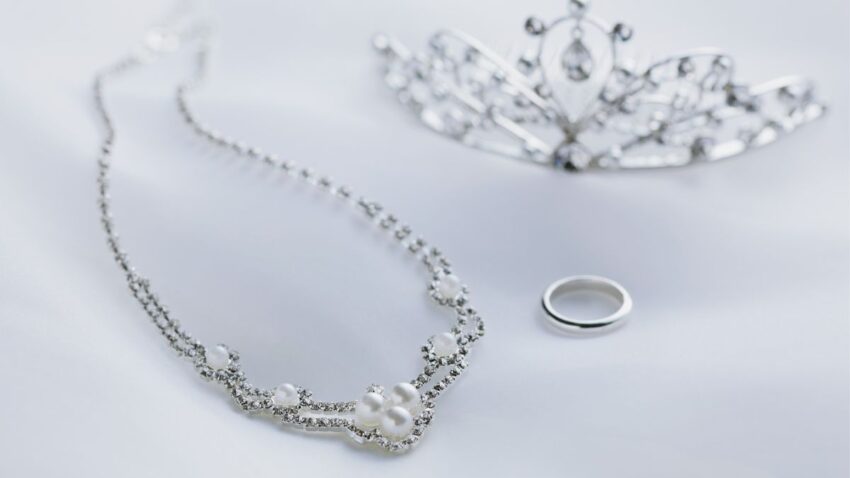925 sterling silver is one of the most popular metals used in fine and everyday jewelry. While it’s often associated with affordability and style, many buyers still have questions: Is it real silver? Does it tarnish? Is it safe for sensitive skin? This guide explains everything you need to know about 925 sterling silver—its benefits, drawbacks, and the common myths that confuse buyers.
Understanding 925 Sterling Silver
“925” refers to the metal’s composition: 92.5% pure silver, combined with 7.5% other metals—usually copper. Pure silver (99.9%) is too soft to craft durable jewelry, so alloying it makes the piece stronger and more wear-resistant.
925 sterling silver is widely used in rings, earrings, necklaces, and bracelets. It offers the look of luxury without the price tag of gold or platinum, making it a favorite among practical, style-conscious consumers.
Key Properties of Sterling Silver
Sterling silver is known for its bright white sheen and smooth finish. It’s relatively soft compared to other metals, making it ideal for engraving and customization. It also conducts heat well and feels comfortable against the skin. While generally hypoallergenic, its skin compatibility depends on the other metals in the alloy—especially if nickel is present.
Pros of 925 Sterling Silver

Durable for Everyday Jewelry
When properly cared for, sterling silver can last decades. It’s tough enough for rings, chains, and lockets worn daily.
Affordable Yet Valuable
Sterling silver costs less than gold but still holds material value. For buyers looking for fine jewelry without overspending, it’s a solid middle-ground option.
Ideal for Customization
Because of its softness and malleability, sterling silver is a great choice for personalized jewelry—engraved names, intricate details, or custom pendants.
Repairable and Easy to Maintain
Unlike cheaper metals, sterling silver can be professionally cleaned, repolished, or resized. It’s a long-term material investment if treated well.
Cons of 925 Sterling Silver
Prone to Tarnishing
Sterling silver reacts with sulfur in the air, which causes darkening over time. This isn’t a sign of poor quality—it’s a natural chemical reaction. A simple polishing cloth or silver dip can restore the original shine.
Softer Than Other Metals
925 silver is more likely to show scratches and dents, especially on exposed surfaces like ring bands. It’s not recommended for heavy-duty wear.
Not Always Hypoallergenic
While pure silver is hypoallergenic, the added 7.5% alloy metals can include nickel, which may irritate sensitive skin. Look for nickel-free certifications if you’re allergy-prone.
Common Misconceptions About Sterling Silver
“Sterling Silver Isn’t Real Silver”
Wrong—925 silver is real silver, just mixed with other metals for strength. It’s the standard for silver jewelry in most countries.
“Sterling Silver Doesn’t Tarnish”
All sterling silver tarnishes eventually. The rate depends on exposure to moisture, sweat, and air. Proper storage and cleaning minimize this.
“If It Tarnishes, It Must Be Fake”
In fact, authentic sterling silver is more likely to tarnish than fake metals. Tarnishing is often a sign of real silver content.
“All Sterling Silver Is Hypoallergenic”
Not always. The hypoallergenic nature depends on the 7.5% alloy. Sterling silver with nickel can trigger skin reactions, so choose nickel-free options.

How to Identify Real 925 Sterling Silver
- Look for a stamp like “925,” “.925,” or “Ster” on hidden parts of the jewelry.
- Magnet test: silver is not magnetic—if it sticks, it’s likely fake.
- Color and tarnish: real sterling silver may show light oxidation, which can be gently cleaned.
- Buy from trusted sources that provide details about materials and allergy safety.
Is 925 Sterling Silver Right for You?
If you want jewelry that’s affordable, long-lasting, and easy to customize, sterling silver is an excellent choice. It’s ideal for gifting, daily wear, and personal keepsakes. Just remember to care for it, and it will age beautifully.
FAQ: 925 Sterling Silver
Q1: Will 925 sterling silver turn my skin green?
Not usually. Green discoloration is more common with copper-based or low-quality metals. Nickel content may cause irritation in sensitive skin.
Q2: Is sterling silver good for everyday wear?
Yes. It’s durable enough for daily use, especially if you avoid harsh chemicals and polish it regularly.
Q3: How do I keep sterling silver from tarnishing?
Store it in airtight bags, avoid water and sweat, and polish with a soft cloth. Use silver-safe cleaning dips occasionally.
Q4: Can I shower with sterling silver jewelry?
It’s not recommended. Water and soap can accelerate tarnishing and dull the finish over time.
Q5: Is 925 silver jewelry valuable?
Yes, while not as expensive as gold or platinum, it holds real material value and is considered fine jewelry.
